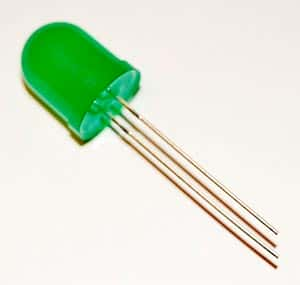The visual impact of OLED panels is hard to resist. Their luminosity is seductively stylish and sleek. Fashion-forward lighting designers prefer the eerily-even silky glow of the OLEDs, even though these are more expensive, have a short lifetime and can be damaged more easily than other light emitting panels. Now GLT or Global Lighting Technologies, with their edge-lit LED-based light guide technology, is about to turn the tables on OLEDs.
The latest product from GLT, a 4×4 inch LED-based light guide, demonstrates this technology specifically. Compared to an OLED panel, the GLT light guide has better durability, higher efficiency, longer life and is cheaper as well.
Applications that would normally use an OLED panel, can easily use the LED-based 4×4 inch square GLT light guide as a more durable and affordable solution. GLT has designed these light guides for use in general lighting applications and they offer diffused light output very similar to that from OLEDs, but at a much lower cost.
Offering enhanced light extraction, the light guide is very thin – only 3.5 mm. The panel itself measures only 2 mm, considerably thinner than products GLT made earlier. When in use, industry standard LEDs will typically light it up from the edges, with only a small frame concealing the LEDs. The current product gives out 250 lumens when fully powered, while the efficiency per watt is over 115 lumens.
GLT produces several types of molded light guides. All the products, including the new 4×4 backlights, are made using an efficient light extraction technology. A high-precision micro-molding process impresses optical features within the light guide. By arranging the features to provide a unique transition area, light spreads uniformly and precisely over each point across the panel. GLT has several standard patterns that they mold into the light guides. They can customize each pattern and meet any application virtually.
GLT develops their light guides in very thin packages and designs mechanical holding features into the backlights. That allows the host application to carry the entire display assembly and if that is not possible, use chip-on-flex or chip-on-glass type of assembly. That helps to reduce the parts count and material and assembly costs.
According to GTL, their light extraction technology delivers better optical performance than that offered by V-groove or stamped, chemical or laser etching and printing processes. Additionally, their process is more repeatable. After having demonstrated their light diffusion technology for a few years, GTL has now incorporated it into some of its high-end lighting products.
With their light diffusion technology, GLT offers a large variety of design options to the luminaire designers. Some of these designs can already be seen in the round 12-inch diameter pendant light. This clever design achieves results remarkably like an OLED. It uses a light guide incorporating LEDs along its inner circumference and they emit light in multiple directions.
Panasonic uses light guides from GLT in commercially available fixtures meant for mounting on ceilings. In the fixture, multiple light guides create discrete distribution patterns. These include spot lighting, downward flood lighting and upward ambient lighting within the room.

